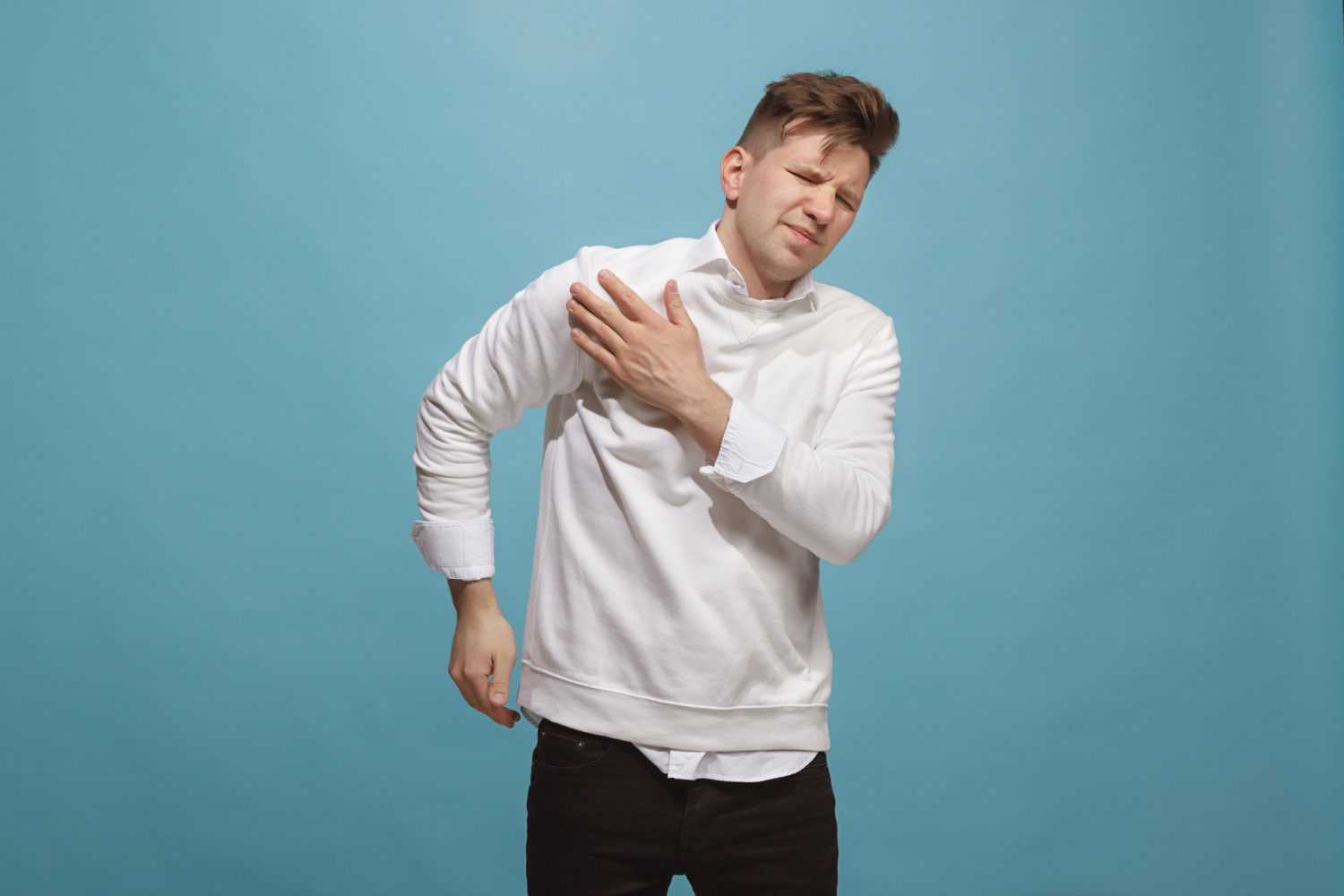Menü
Contact information
- Mimar Sinan Mahallesi 1359. Sokak Akademia Sağlık Merkezi No: 5 K:2 D:4 Alsancak, Konak
- info@safasatoglu.com
- Working hours: 09.00 - 18.00 Sunday: Closed
Shoulder Dislocations
- Home page
- Shoulder Dislocations
Shoulder Dislocations
The shoulder joint is a complicated joint that is produced by the articulation of the shoulder blade, collarbone, and arm bone head. The joint capsule surrounds the bony head of the shoulder, and numerous ligaments and muscles keep the joint from dislocating. Normally, the articular surfaces of the skull bone and the shoulder blade are in touch with each other at all angles of shoulder movement.The disruption of this joint harmony in the shoulder, as well as the disappearance of the relationship between the joint face of the head and shoulder blade, is called shoulder dislocation.
Shoulder dislocations can develop for a variety of reasons. Trauma is the most prevalent of these. Shoulder dislocation is most commonly caused by falling on an open arm. This type of injury is more common in fast-paced sports like skiing, basketball, and soccer.
Shoulder dislocation can also occur in similar falls or collisions in different sports.
Although most patients require a serious trauma to dislocate the shoulder, there are factors that facilitate shoulder dislocation in some patients. Especially in patients with diffuse ligament laxity, shoulder dislocation is more common. The risk of shoulder dislocation increases in patients with previous dislocation in the same shoulder and those who frequently practice overhead activities such as throwing sports.
What kind of damage can occur in the joint during shoulder dislocation?
When the shoulder joint is dislocated, many structures in and around the joint can be damaged. Especially the anterior shoulder ligaments and the joint lip called labrum can be damaged. Apart from this, bone separation at the edge of the joint and collapse of the shoulder head bone may occur.
Again, tears may occur in the rotator cuff muscle tendons, which are more common in elderly patients. As you can see, joint dislocation is a serious injury and can cause significant damage to the tissues and bones around the joint.
What is the treatment for someone who dislocates their shoulder for the first time?
Treatment of a dislocated shoulder is urgent. The dislocation needs to be put back into place as soon as possible by a professional healthcare professional. In environments where medical facilities are available, i.e. health institutions, the dislocation should be performed under light anesthesia. The dislocation under anesthesia is more comfortable for the patient and the tissues are less damaged during the reattachment process as there is no need to force the dislocation. However, if medical facilities are not available and it takes a long time to reach medical facilities (in the mountains, at sea, etc.), the shoulder can be put back in place by people trained in this field.
After the shoulder is put in place, the patient is fitted with a shoulder strap called "Velpau Bandage".
After some surgical interventions, the patient can quickly return to his/her active life, while after some surgeries, the patient may need to use a shoulder sling for a few weeks and then undergo physical therapy to protect the procedure performed.
After the initial shoulder dislocation, surgery is rarely required. However, if the patient is very young and an athlete, if serious damage has developed in the ligament and joint lip that holds the shoulder in place, and if there is severe bone collapse and bone loss, surgery may be required after the first dislocation because the risk of dislocation is high, surgery may be required after the first dislocation. Again, if large-scale rotator cuff tears occur after shoulder dislocation in elderly patients, surgery may be required after the first dislocation. If the above-mentioned conditions are not present, the first shoulder dislocation is usually treated with non-operative methods. After the shoulder is put back in place, strengthening exercises and, if necessary, physical therapy are started after using a shoulder strap for a few weeks and the patient is expected to regain his/her former function. After an average of 6 weeks, the patient can start full daily activities and after 3 months, the patient can start sports activities.

 Turkish
Turkish English
English Deutsch
Deutsch Русский
Русский عربى
عربى